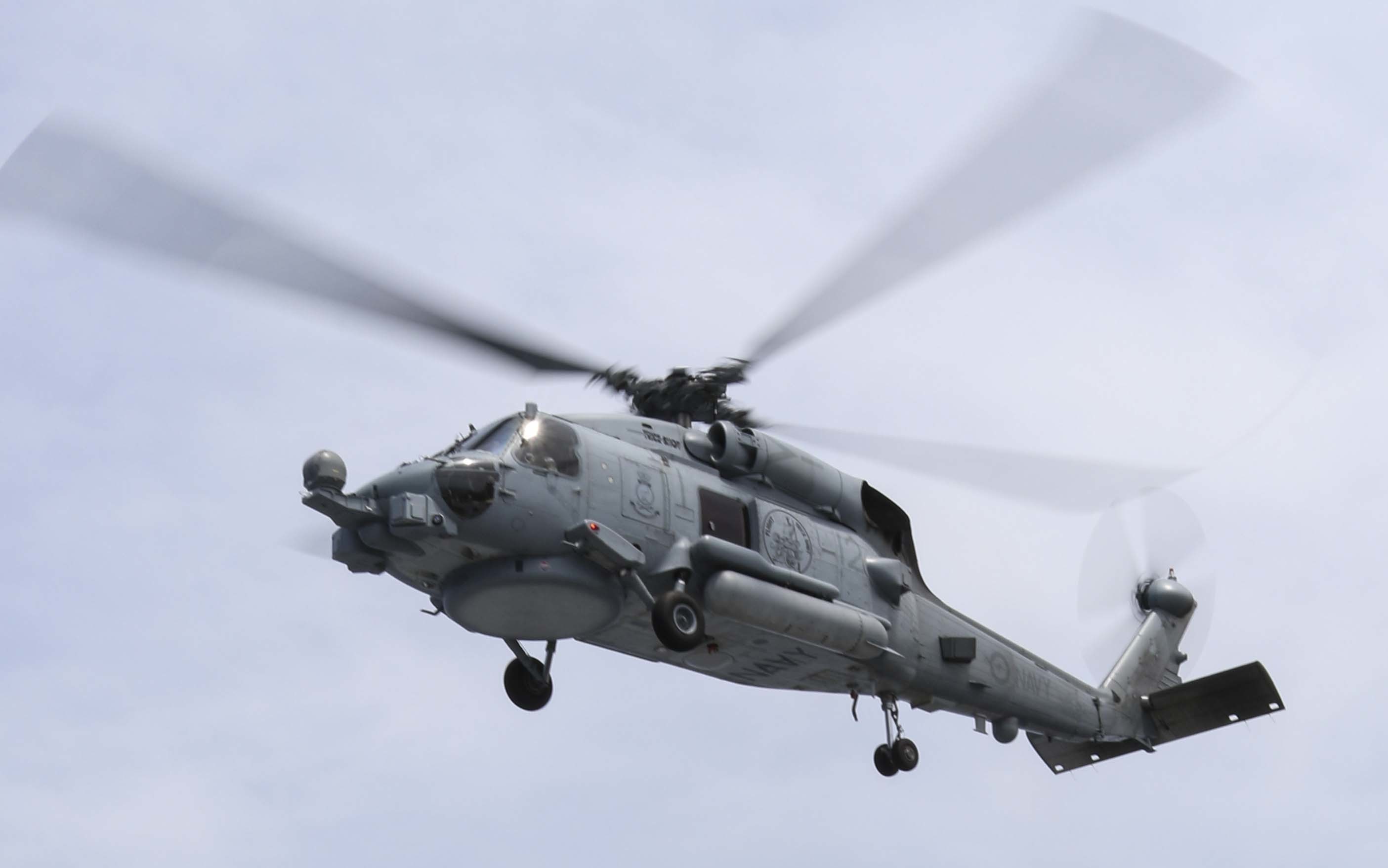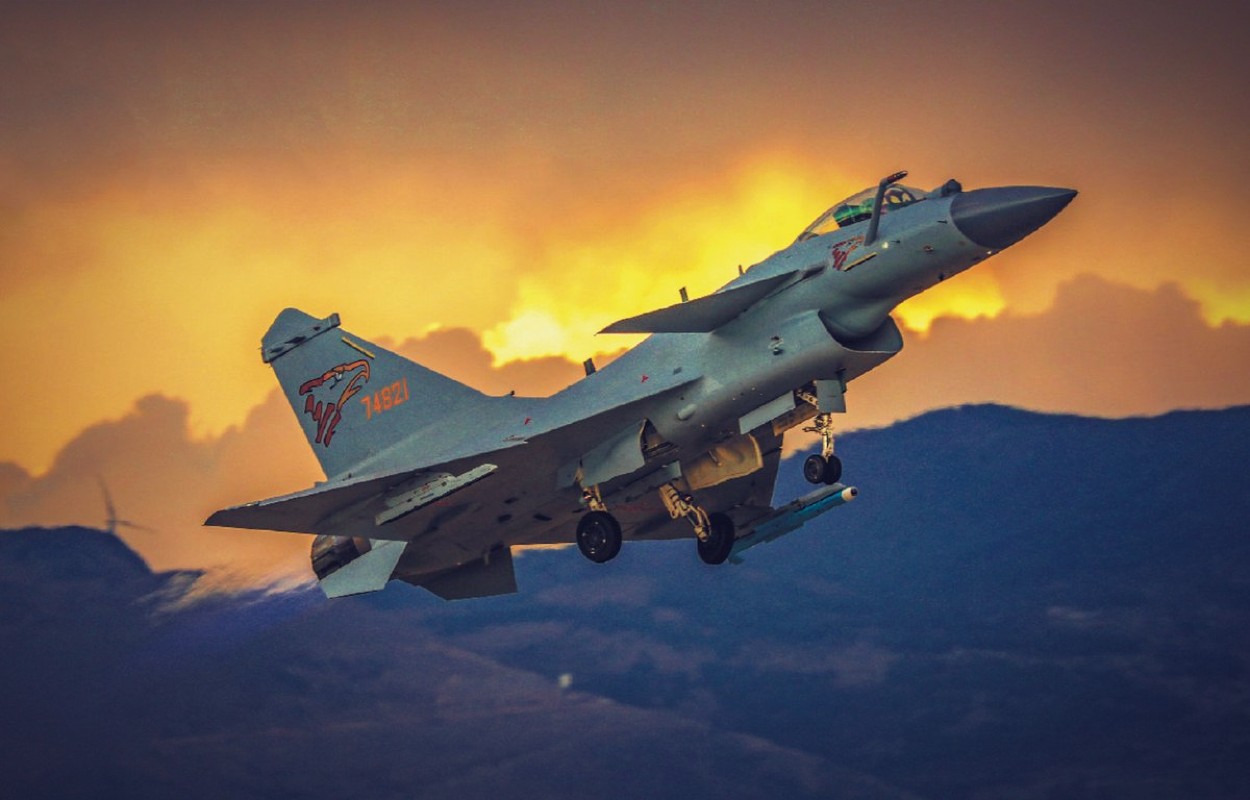In yet another incident of Chinese belligerence, PLA Air Force’s ‘indigenous’ J-10 combat jet was involved in firing flares at an Australian Navy helicopter.
The Australian government accused a Chinese fighter jet of firing flares dangerously near an Australian helicopter when the latter was on a United Nations mission in international waters. The incident was lambasted as “unacceptable” by Australian Defense Minister Richard Marles.
According to Marles, the helicopter pilot had to maneuver to avoid getting struck by the flares. The incident happened over the Yellow Sea, off the coast of Korea, prompting the authorities to lodge protests with the Chinese administration.
“The consequence of being hit by the flares would have been significant,” Marles said. “Importantly, the helicopter was unaffected, and all the crew are safe.” “This was an incident which was both unsafe and unprofessional,” he told the media.
As per the statement released by the Australian Defense Department, the helicopter in question was a Royal Australian Navy’s SeaHawk that took off from the destroyer HMAS Hobart from 300 meters away. Soon after, a Chinese PLA Air Force J-10 fighter jet came dangerously close at about 300 meters and 65 meters above the chopper and released flares.
#Chinese J-10 fighter jet dropped flares about 300 meters in front of an #Australian Seahawk helicopter and about 60 meters above it forcing the aircraft to change direction to avoid a collision.
The Seahawk helicopter was carrying out operations in international waters on… pic.twitter.com/IMVdKIdCP1
— Indo-Pacific News – Geo-Politics & Defense (@IndoPac_Info) May 6, 2024
The flare or chaff is normally released by military aircraft as a countermeasure to confuse hostile missiles trying to shoot down the jet, but it can also be used to sabotage an aircraft.
Richard Marles said, “Australia expects all countries, including China, to operate their militaries professionally and safely.” He further observed that “Defence has, for decades, undertaken maritime surveillance activities in the region and does so by international law, exercising the right to freedom of navigation and overflight in international waters and airspace.”

The incident comes at a time of rising tensions in the Indo-Pacific. The Chinese fighter’s firing of flares came after the defense leaders of the US, Australia, Japan, and the Philippines met in Hawaii in what has been understood to be a dialogue aimed at working out strategies to counter China and its military in the region.
However, this is not the first time a Chinese jet has been accused of carrying out a dangerous maneuver against an Australian aircraft. In June 2022, the Australian Defense Department lodged a strong protest over another dangerous maneuver conducted by a PLAAF J-16 fighter jet against an Australian P-8A surveillance aircraft over the South China Sea.
The Chinese aircraft “flew very close to the side of the [Australian] P-8 maritime surveillance aircraft” and then “released flares,” Defense Minister Richard Marles told reporters at the time.
However, this time, China dispatched a J-10 fighter instead of a J-16, typically deployed for these interception missions by the PLAAF.
PLAAF’s J-10 Is Its Most-Loved Fighter
Before the J-10’s ascent, most of China’s fighter jet inventory comprised license-built variants of Soviet-origin platforms and Soviet-manufactured aircraft. The J-10, for China, signifies a significant advancement in its efforts to produce fighters domestically.
China Gets ‘Unrestricted Access’ To US Backyard Just 100 Miles Off Florida; Should Washington Worry?
The J-10 is a medium-weight, single-engine jet fighter that can operate in all weather conditions. It’s the first indigenous advanced jet fighter made in China. In 2020, Pakistan became the first overseas customer of this aircraft.
China began developmental work on the J-10 in 1984, shortly after the United States and the Soviet Union introduced F-16 Fighting Falcon and Mikoyan MiG-29 in 1978 and 1982, respectively.
Last year, Beijing marked 25 years of service of the indigenously developed fourth-generation fighter jet, which remains the mainstay of the country’s air power.
All these years later, China has had multiple aircraft variants, with the most advanced being the J-10C fighter, classified as a 4+ generation fighter and aggressively pushed for export. Earlier this year, the aircraft participated in the World Defense Show in Saudi Arabia, where it garnered attention from several Middle Eastern countries.

The J-10C underwent a significant overhaul in 2018 and is now projected as a cutting-edge 4+ generation fighter jet by China. Earlier this year, a video published by the Chinese People’s Liberation Army Air Force (PLAAF) showed a rare refueling of seven J-10C Fighter jets by a single YY-20 refueling aircraft in a stunning display of PLAAF’s might.
The J-10C can be equipped with various 4th-generation air-to-air missiles, including the Chinese PL-10 short-range missile and the PL-15 beyond visual range missile. The omni-role aircraft is armed with an advanced electronics warfare suite.
The J-10C in Chinese service has notable features like an infrared search and track and laser rangefinder dome in front of the cockpit, as well as a glass cockpit with a wide-angle holographic head-up display. It is also equipped with an Active Electronically-Scanned Array (AESA) radar.
- Contact the author at sakshi.tiwari9555 (at) gmail.com
- Follow EurAsian Times on Google News




